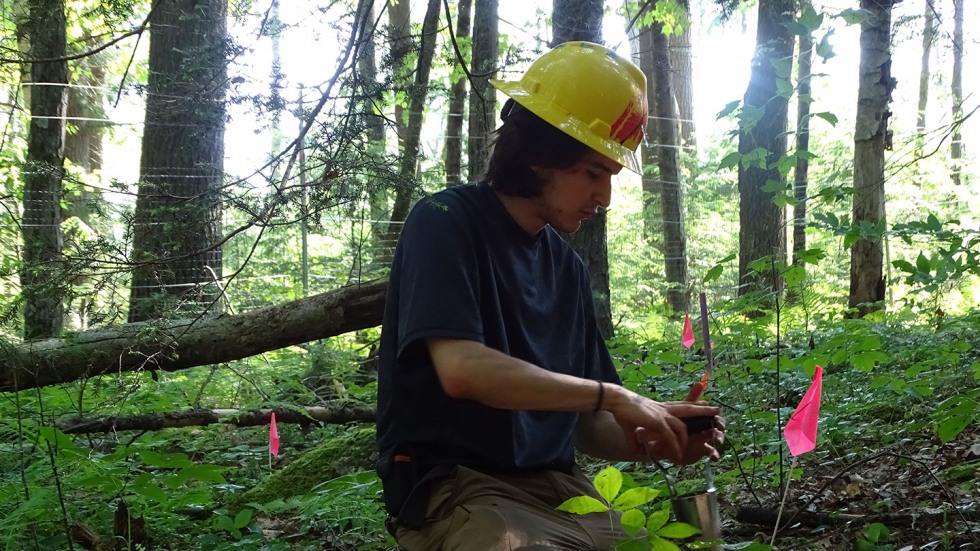PROVIDENCE, R.I. [Brown University] — Marcos Rodriguez has always loved natural history museums and zoos.
“I never grew out of the dinosaur and animal phase,” the rising Brown University junior from El Paso, Texas said. “I just became more interested in life processes and the science behind them.”
This passion for understanding how living things interact and change naturally led him to Brown’s program in biology with a concentration in ecology and evolutionary biology.
During his first semester on campus, Rodriguez said, he completed a course with Jim Kellner, an assistant professor of environmental studies affiliated with the Institute at Brown for Environment and Society. Rodriguez was interested in doing research over the summer — Kellner recommended the National Science Foundation’s Research Experiences for Undergraduates (REU) program, which supports summer research in many disciplines and offers students a stipend.
Through REU, Rodriguez found out about the Harvard Forest summer research program and was intrigued by its focus on theoretical models explaining forest structure. Current mathematical models explaining how forests grow and the amount of energy they produce are based on data from larger trees, but smaller trees don’t get as much light, so their growth rate and energy patterns might not match these models.
In order to improve these models, Rodriguez spent the summer classifying and measuring tiny saplings in small plots of land and comparing his findings to data from prior years to track how they are growing. The longitudinal data he’s helping to collect could ultimately improve scientific understanding of forest growth and even carbon dioxide storage.
Rodriguez also ventured into the forests of Western Massachusetts at the crack of dawn a few mornings to take photos of the forest canopy with a specialized camera. This allowed him — and others among the group of 26 Harvard Forest interns from universities across the nation — to determine the amount of light that reached each plot and each sapling.
Over the summer Rodriguez connected on a personal and academic level with the other interns. He enjoyed engaging in conversation, helping others with their research and receiving their help in turn, and attending evening workshops and career lectures with them.
The Harvard Forest program also allowed Rodriguez to take classroom lessons and apply them to real-world research and to learn how to manage his own research project. Most importantly, he said, he learned what kind of scientific research he finds fulfilling.
“I really enjoyed the theoretical approach of this research,” he said. “The Harvard Forest program isn’t about studying one species in order to conserve it, but how all forests are structured. It has a broader impact on all of science. I want to go to graduate school and eventually become a scientist, a professor, so knowing the kind of research I like is very important.”
Last summer, Rodriguez participated in an REU program at Central Michigan University's Biological Station, where he studied an invasive species and its effect on the Great Lakes ecosystem. Having two different summer research experiences allowed him to compare what proved most valuable from each experience. For next summer, he plans to apply for a Karen T. Romer Undergraduate Teaching and Research Award (UTRA), which Brown provides for students to stay on campus and work with faculty on research projects over the summer.
“My time at the Harvard Forest research station was phenomenal,” Rodriguez said. “You get to meet new people, learn how to tackle research challenges in the real world and maybe find out what you want to do for the rest of your life.”

